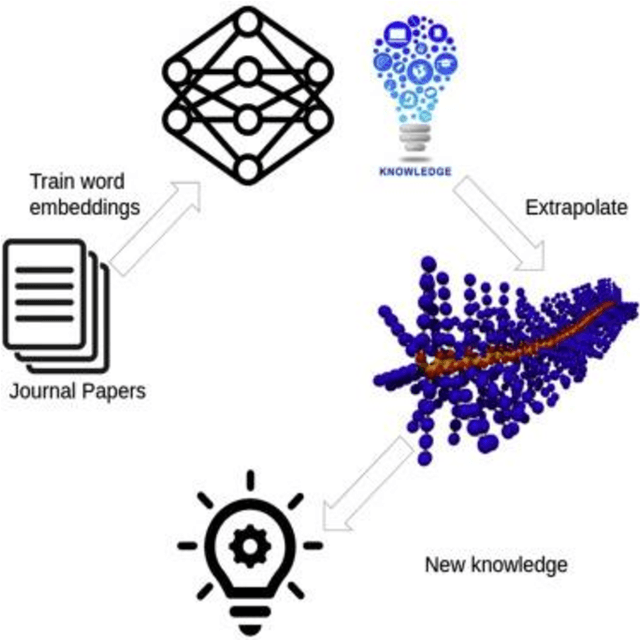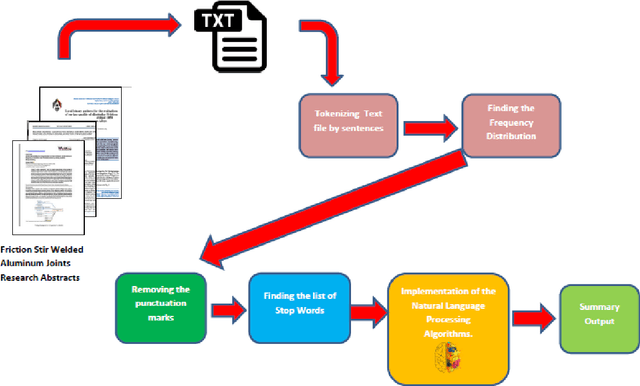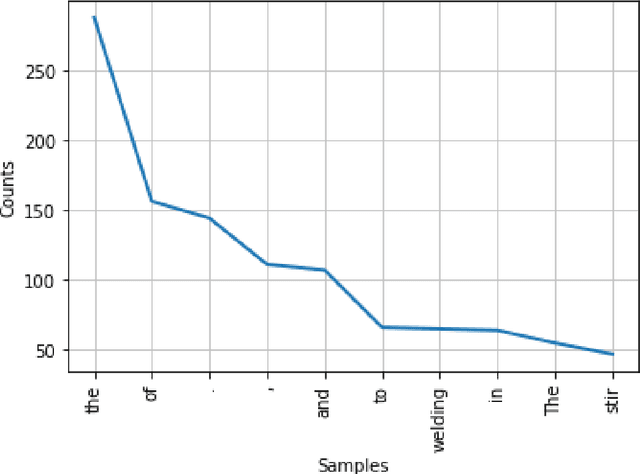Akshansh Mishra
Advanced Displacement Magnitude Prediction in Multi-Material Architected Lattice Structure Beams Using Physics Informed Neural Network Architecture
Dec 31, 2024Abstract:This paper proposes an innovative method for predicting deformation in architected lattice structures that combines Physics-Informed Neural Networks (PINNs) with finite element analysis. A thorough study was carried out on FCC-based lattice beams utilizing five different materials (Structural Steel, AA6061, AA7075, Ti6Al4V, and Inconel 718) under varied edge loads (1000-10000 N). The PINN model blends data-driven learning with physics-based limitations via a proprietary loss function, resulting in much higher prediction accuracy than linear regression. PINN outperforms linear regression, achieving greater R-square (0.7923 vs 0.5686) and lower error metrics (MSE: 0.00017417 vs 0.00036187). Among the materials examined, AA6061 had the highest displacement sensitivity (0.1014 mm at maximum load), while Inconel718 had better structural stability.
Biomimetic Machine Learning approach for prediction of mechanical properties of Additive Friction Stir Deposited Aluminum alloys based walled structures
Aug 05, 2024Abstract:This study presents a novel approach to predicting mechanical properties of Additive Friction Stir Deposited (AFSD) aluminum alloy walled structures using biomimetic machine learning. The research combines numerical modeling of the AFSD process with genetic algorithm-optimized machine learning models to predict von Mises stress and logarithmic strain. Finite element analysis was employed to simulate the AFSD process for five aluminum alloys: AA2024, AA5083, AA5086, AA7075, and AA6061, capturing complex thermal and mechanical interactions. A dataset of 200 samples was generated from these simulations. Subsequently, Decision Tree (DT) and Random Forest (RF) regression models, optimized using genetic algorithms, were developed to predict key mechanical properties. The GA-RF model demonstrated superior performance in predicting both von Mises stress (R square = 0.9676) and logarithmic strain (R square = 0.7201). This innovative approach provides a powerful tool for understanding and optimizing the AFSD process across multiple aluminum alloys, offering insights into material behavior under various process parameters.
LatticeML: A data-driven application for predicting the effective Young Modulus of high temperature graph based architected materials
Apr 16, 2024Abstract:Architected materials with their unique topology and geometry offer the potential to modify physical and mechanical properties. Machine learning can accelerate the design and optimization of these materials by identifying optimal designs and forecasting performance. This work presents LatticeML, a data-driven application for predicting the effective Young's Modulus of high-temperature graph-based architected materials. The study considers eleven graph-based lattice structures with two high-temperature alloys, Ti-6Al-4V and Inconel 625. Finite element simulations were used to compute the effective Young's Modulus of the 2x2x2 unit cell configurations. A machine learning framework was developed to predict Young's Modulus, involving data collection, preprocessing, implementation of regression models, and deployment of the best-performing model. Five supervised learning algorithms were evaluated, with the XGBoost Regressor achieving the highest accuracy (MSE = 2.7993, MAE = 1.1521, R-squared = 0.9875). The application uses the Streamlit framework to create an interactive web interface, allowing users to input material and geometric parameters and obtain predicted Young's Modulus values.
Performance Prediction of Data-Driven Knowledge summarization of High Entropy Alloys (HEAs) literature implementing Natural Language Processing algorithms
Nov 06, 2023Abstract:The ability to interpret spoken language is connected to natural language processing. It involves teaching the AI how words relate to one another, how they are meant to be used, and in what settings. The goal of natural language processing (NLP) is to get a machine intelligence to process words the same way a human brain does. This enables machine intelligence to interpret, arrange, and comprehend textual data by processing the natural language. The technology can comprehend what is communicated, whether it be through speech or writing because AI pro-cesses language more quickly than humans can. In the present study, five NLP algorithms, namely, Geneism, Sumy, Luhn, Latent Semantic Analysis (LSA), and Kull-back-Liebler (KL) al-gorithm, are implemented for the first time for the knowledge summarization purpose of the High Entropy Alloys (HEAs). The performance prediction of these algorithms is made by using the BLEU score and ROUGE score. The results showed that the Luhn algorithm has the highest accuracy score for the knowledge summarization tasks compared to the other used algorithms.
Supervised Machine Learning and Physics based Machine Learning approach for prediction of peak temperature distribution in Additive Friction Stir Deposition of Aluminium Alloy
Sep 13, 2023Abstract:Additive friction stir deposition (AFSD) is a novel solid-state additive manufacturing technique that circumvents issues of porosity, cracking, and properties anisotropy that plague traditional powder bed fusion and directed energy deposition approaches. However, correlations between process parameters, thermal profiles, and resulting microstructure in AFSD remain poorly understood. This hinders process optimization for properties. This work employs a cutting-edge framework combining supervised machine learning (SML) and physics-informed neural networks (PINNs) to predict peak temperature distribution in AFSD from process parameters. Eight regression algorithms were implemented for SML modeling, while four PINNs leveraged governing equations for transport, wave propagation, heat transfer, and quantum mechanics. Across multiple statistical measures, ensemble techniques like gradient boosting proved superior for SML, with lowest MSE of 165.78. The integrated ML approach was also applied to classify deposition quality from process factors, with logistic regression delivering robust accuracy. By fusing data-driven learning and fundamental physics, this dual methodology provides comprehensive insights into tailoring microstructure through thermal management in AFSD. The work demonstrates the power of bridging statistical and physics-based modeling for elucidating AM process-property relationships.
Machine Learning-Assisted Pattern Recognition Algorithms for Estimating Ultimate Tensile Strength in Fused Deposition Modeled Polylactic Acid Specimens
Jul 13, 2023Abstract:In this study, we investigate the application of supervised machine learning algorithms for estimating the Ultimate Tensile Strength (UTS) of Polylactic Acid (PLA) specimens fabricated using the Fused Deposition Modeling (FDM) process. A total of 31 PLA specimens were prepared, with Infill Percentage, Layer Height, Print Speed, and Extrusion Temperature serving as input parameters. The primary objective was to assess the accuracy and effectiveness of four distinct supervised classification algorithms, namely Logistic Classification, Gradient Boosting Classification, Decision Tree, and K-Nearest Neighbor, in predicting the UTS of the specimens. The results revealed that while the Decision Tree and K-Nearest Neighbor algorithms both achieved an F1 score of 0.71, the KNN algorithm exhibited a higher Area Under the Curve (AUC) score of 0.79, outperforming the other algorithms. This demonstrates the superior ability of the KNN algorithm in differentiating between the two classes of ultimate tensile strength within the dataset, rendering it the most favorable choice for classification in the context of this research. This study represents the first attempt to estimate the UTS of PLA specimens using machine learning-based classification algorithms, and the findings offer valuable insights into the potential of these techniques in improving the performance and accuracy of predictive models in the domain of additive manufacturing.
Employing Explainable Artificial Intelligence (XAI) Methodologies to Analyze the Correlation between Input Variables and Tensile Strength in Additively Manufactured Samples
May 28, 2023Abstract:This research paper explores the impact of various input parameters, including Infill percentage, Layer Height, Extrusion Temperature, and Print Speed, on the resulting Tensile Strength in objects produced through additive manufacturing. The main objective of this study is to enhance our understanding of the correlation between the input parameters and Tensile Strength, as well as to identify the key factors influencing the performance of the additive manufacturing process. To achieve this objective, we introduced the utilization of Explainable Artificial Intelligence (XAI) techniques for the first time, which allowed us to analyze the data and gain valuable insights into the system's behavior. Specifically, we employed SHAP (SHapley Additive exPlanations), a widely adopted framework for interpreting machine learning model predictions, to provide explanations for the behavior of a machine learning model trained on the data. Our findings reveal that the Infill percentage and Extrusion Temperature have the most significant influence on Tensile Strength, while the impact of Layer Height and Print Speed is relatively minor. Furthermore, we discovered that the relationship between the input parameters and Tensile Strength is highly intricate and nonlinear, making it difficult to accurately describe using simple linear models.
Neurosymbolic Artificial Intelligence (NSAI) based Algorithm for predicting the Impact Strength of Additive Manufactured Polylactic Acid (PLA) Specimens
May 07, 2023Abstract:In this study, we introduce application of Neurosymbolic Artificial Intelligence (NSAI) for predicting the impact strength of additive manufactured polylactic acid (PLA) components, representing the first-ever use of NSAI in the domain of additive manufacturing. The NSAI model amalgamates the advantages of neural networks and symbolic AI, offering a more robust and accurate prediction than traditional machine learning techniques. Experimental data was collected and synthetically augmented to 1000 data points, enhancing the model's precision. The Neurosymbolic model was developed using a neural network architecture comprising input, two hidden layers, and an output layer, followed by a decision tree regressor representing the symbolic component. The model's performance was benchmarked against a Simple Artificial Neural Network (ANN) model by assessing mean squared error (MSE) and R-squared (R2) values for both training and validation datasets. The results reveal that the Neurosymbolic model surpasses the Simple ANN model, attaining lower MSE and higher R2 values for both training and validation sets. This innovative application of the Neurosymbolic approach in estimating the impact strength of additive manufactured PLA components underscores its potential for optimizing the additive manufacturing process. Future research could investigate further refinements to the Neurosymbolic model, extend its application to other materials and additive manufacturing processes, and incorporate real-time monitoring and control for enhanced process optimization.
Quantum Machine Learning Approach for the Prediction of Surface Roughness in Additive Manufactured Specimens
Apr 24, 2023



Abstract:Surface roughness is a crucial factor influencing the performance and functionality of additive manufactured components. Accurate prediction of surface roughness is vital for optimizing manufacturing processes and ensuring the quality of the final product. Quantum computing has recently gained attention as a potential solution for tackling complex problems and creating precise predictive models. In this research paper, we conduct an in-depth comparison of three quantum algorithms i.e. the Quantum Neural Network (QNN), Quantum Forest (Q-Forest), and Variational Quantum Classifier (VQC) adapted for regression for predicting surface roughness in additive manufactured specimens for the first time. We assess the algorithms performance using Mean Squared Error (MSE), Mean Absolute Error (MAE), and Explained Variance Score (EVS) as evaluation metrics. Our findings show that the Q-Forest algorithm surpasses the other algorithms, achieving an MSE of 56.905, MAE of 7.479, and an EVS of 0.2957. In contrast, the QNN algorithm displays a higher MSE of 60.840 and MAE of 7.671, coupled with a negative EVS of -0.444, indicating that it may not be appropriate for predicting surface roughness in this application. The VQC adapted for regression exhibits an MSE of 59.121, MAE of 7.597, and an EVS of -0.0106, suggesting its performance is also inferior to the Q-Forest algorithm.
Information Retrieval in Friction Stir Welding of Aluminum Alloys by using Natural Language Processing based Algorithms
Apr 25, 2022



Abstract:Text summarization is a technique for condensing a big piece of text into a few key elements that give a general impression of the content. When someone requires a quick and precise summary of a large amount of information, it becomes vital. If done manually, summarizing text can be costly and time-consuming. Natural Language Processing (NLP) is the sub-division of Artificial Intelligence that narrows down the gap between technology and human cognition by extracting the relevant information from the pile of data. In the present work, scientific information regarding the Friction Stir Welding of Aluminum alloys was collected from the abstract of scholarly research papers. For extracting the relevant information from these research abstracts four Natural Language Processing based algorithms i.e. Latent Semantic Analysis (LSA), Luhn Algorithm, Lex Rank Algorithm, and KL-Algorithm were used. In order to evaluate the accuracy score of these algorithms, Recall-Oriented Understudy for Gisting Evaluation (ROUGE) was used. The results showed that the Luhn Algorithm resulted in the highest f1-Score of 0.413 in comparison to other algorithms.
 Add to Chrome
Add to Chrome Add to Firefox
Add to Firefox Add to Edge
Add to Edge